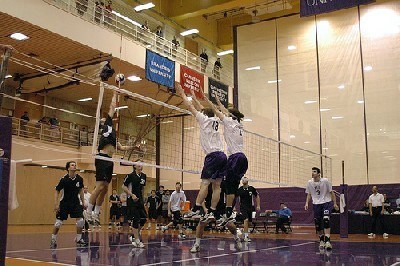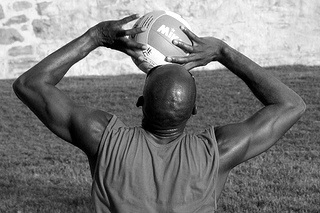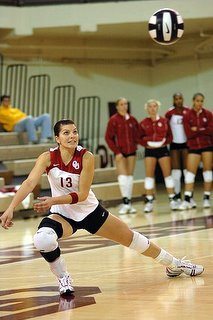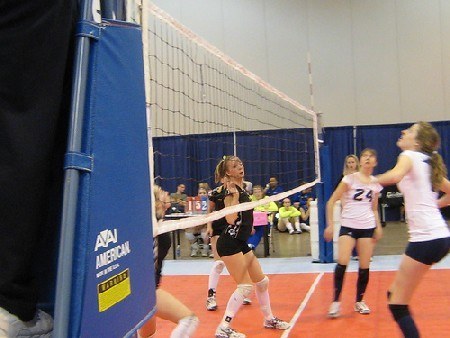Volleyball court measurements are an important part of the information you need to play and coach volleyball. On this page, we are going to cover the court dimensions and the rules associated with the court.
The volleyball court measurements are as follows:
The length of the court from one end to the other is 18 meters long (about 59 feet 2 inches). The width of the court is 9 meters wide (29 feet 6 inches). This width and length both represent the measurements from the outsides of the line on each respective end.
The net is in the middle of the court which is 9 meters (29 feet 6 inches) from the ends. Each half of the court becomes a 9 by 9 meter square area.
For an example of how the court is laid out, take a look at this picture:
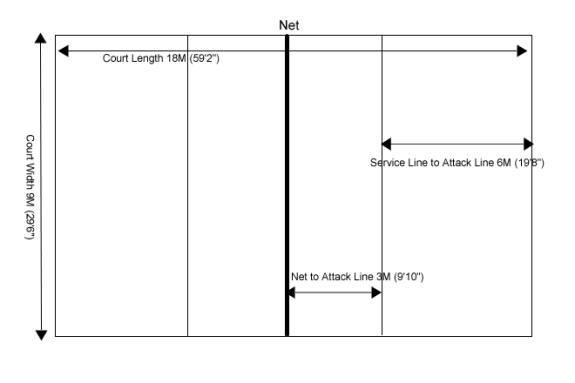
On each half of the floor, there is an attack line. This line is parallel to the net and it is 3 meters (9 feet 10 inches) away from the net. This is another one of those important volleyball court measurements. The attack line is a line that shows the back row hitters where they need to jump from in order to attack (spike) the ball over the net.
So, when a player is on the back row and they are going to spike the ball, they must jump behind the line in order to do so. If they step on or over the line while attacking, the referee will call a foot fault and the other team will get the point if you are playing rally point.
The purpose of the attack line is to ensure that there are only three front row attackers at any time. The game would be too confusing and difficult to run if all six players could attack at the net.
The attack line will then force your back row players to be athletic if they are going to hit the ball. They will need to jump high enough and far enough in order to be an effective attacker. If you your team is struggling to jump well enough to do this, I highly recommend taking a look at this program to increase your vertical jump.
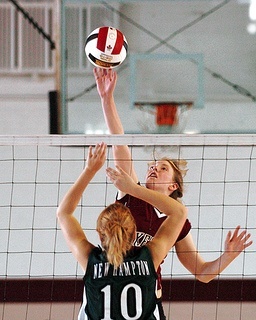 Back row attackers are used to create some devastating plays. If your setter were to set a #1 for your middle blocker and then have the player in the back row in the middle position attack, it would be a difficult play to stop. Why? Because the players blocking in the middle on the other team are going to jump to block the front middle hitter, and then as they are landing from their block, the back row hitter would be the one to hit with virtually no blockers.
Back row attackers are used to create some devastating plays. If your setter were to set a #1 for your middle blocker and then have the player in the back row in the middle position attack, it would be a difficult play to stop. Why? Because the players blocking in the middle on the other team are going to jump to block the front middle hitter, and then as they are landing from their block, the back row hitter would be the one to hit with virtually no blockers.
The back row attack is also frequently used by the setter as a backup plan. If the pass to the setter is bad, you will usually see the setter set the ball to one of the back row attackers because they cannot effectively deliver the ball to the front row. That is another reason you must be good at this play as it will make things easier for your setter when the pass is not where it should be.
When the setter is coming off of the back row to set, they cannot attack the ball over the net. The attack line also applies to the setter. So, when you are playing defense, call out where the setter is. If they are coming off the back row, you do not need to worry about blocking the setter. This is another reason that volleyball court measurements are important to know.

